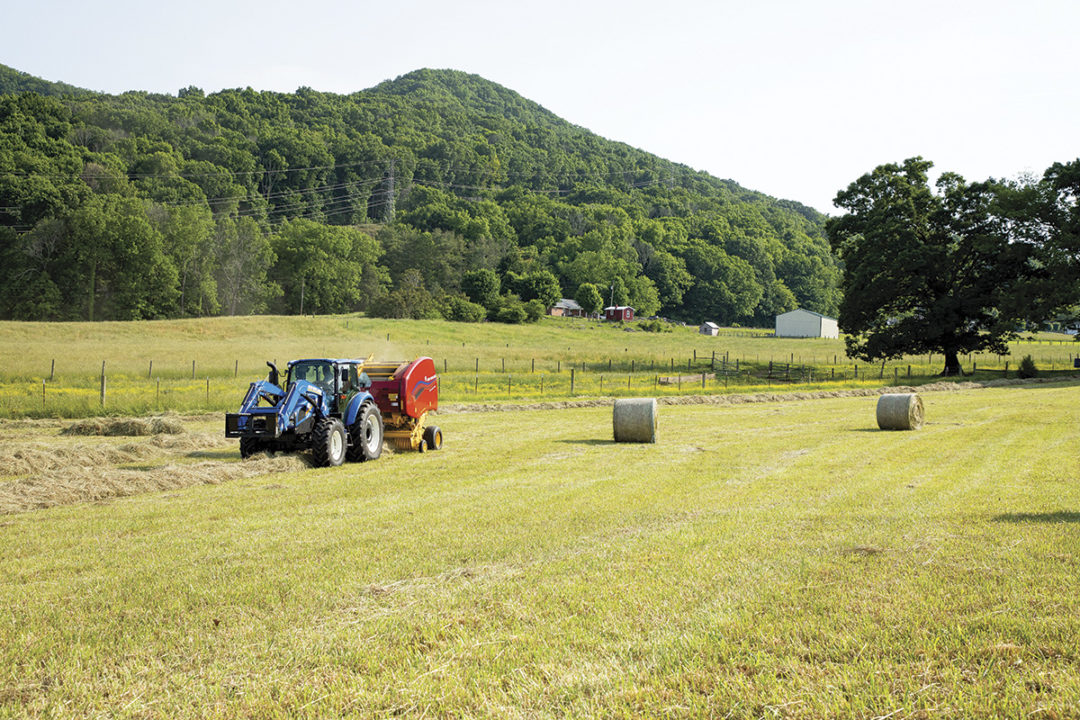Precision farming is not new. Autoguidance and other precision farming technologies have been around for the past 20 years, but up until now, they’ve typically been used by cash crop operations, mainly because of price. For the hay and forage producer, it simply didn’t make sense in terms of return on investment for a $25,000-$30,000 expenditure for precision ag technology.
But as technology advances, prices drop. Today’s autoguidance technology is extremely affordable. Entry-level field computer and guidance options start at just a few thousand dollars. Display and autosteer kits are available to retrofit older model tractors as well as weather-resistant and dust-resistant field computers that can be utilized for open cab tractors.
There are a lot of pluses for autoguidance. Smaller hay operations that use a midrange tractor often use that same tractor for haymaking and all their other chores. Whether it's overseeding, fertilizing or pulling a sprayer, they can use an autoguidance display to cut down on overlaps and misses, increasing their bottom line.
You can even work later into the evening when it starts getting dusky. When you’ve got your autoguidance display on, you know exactly where you are in the field, and can squeeze in an extra hour of work, where in the past, you'd have to shut down. The next day, you can pick up in the field exactly where you left off.
Another area where we’re seeing real merit is with low-cost telematics. Telematics technology has been available for the last several years, but again, it's been pretty much tied to higher HP tractors. Today, there are several aftermarket options to connect your machines.
With telematics, GPS tracking allows you to know exactly where your equipment is located at all times. You can see where your tractors are by just pulling them up on a computer. Telematics can also connect your utility terrain vehicles, semitruck or other farm vehicles.
Producers appreciate having track and trace capabilities from their computer or smartphone and being able to see certain engine parameters and if the engine is on, off or idling. The equipment’s hours and setup alerts keep service on schedule, which helps extend the life of your machines.
If you choose to, you can also share this data with your local equipment dealer. Depending on the equipment, there are different levels of information on the machine that can be shared. This could allow your dealer to begin to remotely diagnose the machine before seeing it. This also allows the dealer technician to see the machine's exact location, so wherever you have the piece of equipment, the technician will be able to drive right to it.
Mobile apps for round balers are also being developed. Instead of keeping your records in a little spiral-bound notebook in the cab of your tractor, a mobile app will connect via Bluetooth to the tractor’s baler monitor. When you go into a field and start a job, it counts the number of bales in that field or job. If you're a custom operator, you can send an invoice to your customer right from your phone with the exact number of bales in that field. Right now, the app is mostly a way of digitizing bale invoicing, but as it’s developed further, it will be a bale dashboard where you can do other types of record-keeping too.
Many of the things that made precision farming such a huge help to the cash crop farmer are now available to hay and forage growers. Technology is being utilized in a wide variety of ways on the farm these days. It’s affordable and easy to use. It is the future of agriculture, and now is the time to start introducing technology to hay and forage farms.











